Open Core Connection / Rock Interlock
SEAWALLS
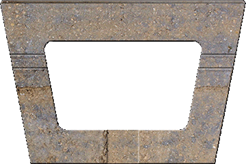
IMPORTANT - PLEASE READ
Open Core Connection or Rock Interlock as we sometimes call it, relies solely on the interaction of rock in GeoStone's large open core for connection. Other wall systems come with a separate element that may have to be purchased in order to "complete the connection" or "align" the product. These items can come in the form of a pin, rod, or claw of some sort and can become a very costly portion of retaining wall construction.
Still, there are other wall systems that use built-in forms of connection or alignment such as lips and lugs. These forms mandate a specific setback or batter in the wall and cannot be changed without modifying the block itself with a saw or grinder. This will slow down wall construction considerably. Such hindrances will be most evident in stairs, battered radii, and required vertical applications.
The GeoStone retaining wall system is not limited in such ways giving the installer complete freedom of installation. It also provides the most powerful connection on the market. The angular crushed limestone (#57 or #67) in the cores provides an incredible amount of friction, much more than a pin or lip. The large open core filled with crushed stone (aka - free draining material) also allows for maximum drainage. Any professional installer will agree that when it comes to modular retaining walls, compaction along with superior connection strength and maximum drainage properties are key in building a successful wall.






1 - 6
<
>

As shown above, GeoStone's large open core allows for superior interlock and drainage. Two key components in successful modular retaining wall construction.
SHORELINE PROPERTY IS VALUABLE. PROTECT IT WITH GEOSTONE SEAWALLS
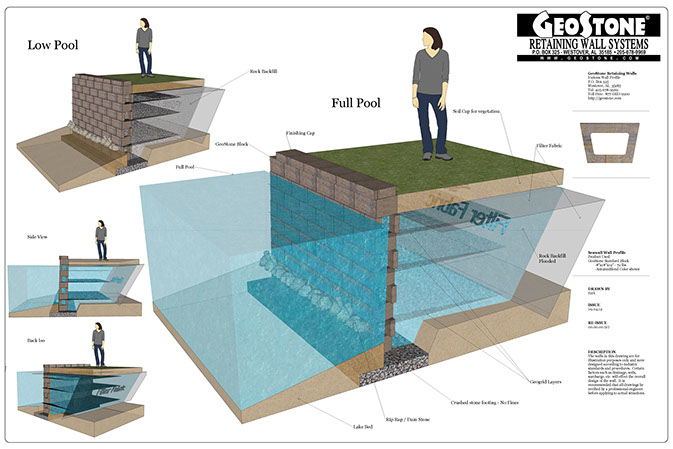
Seawalls are a variation of modular wall construction in that the procedure is the same but different. The conditions of shoreline walls (seawalls) are by nature, a hostile environment for any man-made structure so these conditions have to be accounted for. The majority of seawall construction occurs when water levels are brought down. Sometimes this is controlled by the local power company or in smaller bodies of water, the homeowners association or common areas management company. Seawalls are used to protect the shoreline from further erosion and in some cases to recapture property lost to prior erosion. The key to success in seawall design and construction is proper drainage. GeoStone is perfect for this in that its design allows for maximum drainage and connection in all applications.
Batter (Setback) - a plain, flat offset in a wall. A measurement of the increment each wall course moves or steps back.
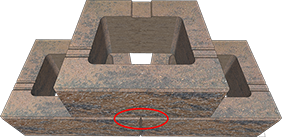
0.35" - back of front chamfer (bottom block)
(5° on 4" block / 2.5° on 8" block)
Most Commonly used with 4" block.
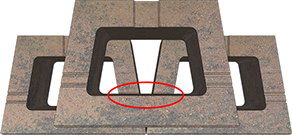
2" - back of front wall (top block) aligns with 2nd groove bottom blocks. Rarely Used.
(26.57° on 4" block / 14.04° on 8" block)
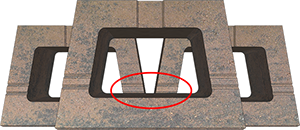
1" - back of front wall (top block) aligns with 1st groove on bottom blocks. Most Common.
(14.04° on 4" block / 7.13° on 8" block)
As stated in other sections of this website, GeoStone can achieve any batter due to its open core connection properties. This includes vertical walls. The illustrations shown above are merely for guideline purposes and built in methods for batter control when required. Another example of this variable batter can be seen here as well as on our CAD files section.


